Operating Instructions
1. Upper Function Bar
The upper function bar above includes: "Sitemap", "News", "Editing Instructions", "User Guide", "FAQs", "Member Login", "Function Settings", "Chinese Version".
.jpg)
2. The Central Main Function Bar
The central main functional bar includes: "Basic Search", "Advanced Search", "Bopomofo Index", "Stroke Index", "Radical Index" and "Appendix". Each function is described as follows:
(1) Basic Search
- Keyword Search
Step 1:
01. Enter keywords, you can enter Chinese, or use the system keypad function to enter Bopomofo, Hanyu Pinyin.
02. A list of candidate words appears in the system, you can click on the words in the candidate list, or enter keywords by yourself.
03. Select the search scope as "Word" or "Full Text".
04. Click "Search".
Example: Enter "天下" → Check the scope of the query "Word" → click "Search".
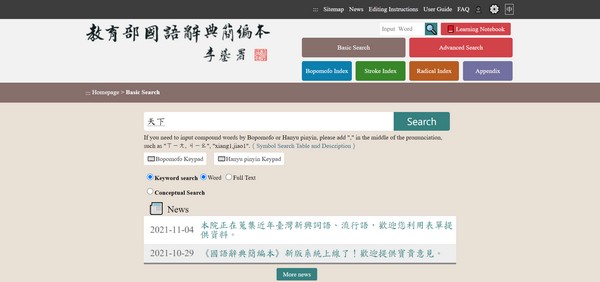
Step 2:
01. View the search result list.
02. It can be sorted by "Phonetic Sequence (ascending)", "Phonetic Sequence (descending)", "Word Count (ascending)" or "Word Count (descending)."
03. If you have logged in as a member, you can add the search results into "Learning Notebook".
04. You can switch to "Text" or "Appendix" information by clicking the tab.

Step 3: View the main text word entry content page
01. Click the word column of the result list to enter the content page of the text.
02. If you have logged in as a member, you can add the word into "Learning Notebook".
03. The font size can be set.
04. The content of the current page can be printed.
05. Click on each word in the title and go directly to the single word content page.
06. Click Bopomofo to directly search for the phonetic; if it is a one-word content page, you can click on the radical to search for the radical.
07. If the content page has a playable audio file, you can click the play button for "One-Word", "Full Text" or "Foreign Language" sound playback.
.png)
Step 4: View the content page of the appendix
01. Click on the appendix tab to enter the list of appendix data results.
02. The system pops out of the instruction window to remind you that it will enter the appendix data, and you can choose not to display it afterwards.
03. Click the word column of the result list to enter the appendix data content page.
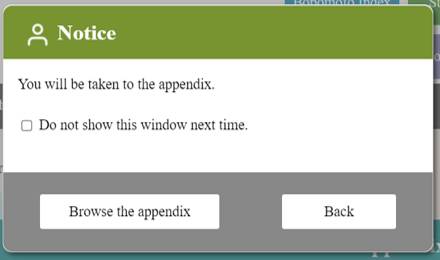

- Conceptual Search
Step 1:
01. Enter Chinese keywords.
02. A list of candidate words appears in the system, you can click on the words in the candidate list, or enter keywords by yourself.
03. Click on "Conceptual Search".
04. Click "Search".
Example: Enter "教育" → Click on "Conceptual Search" → Click "Search"
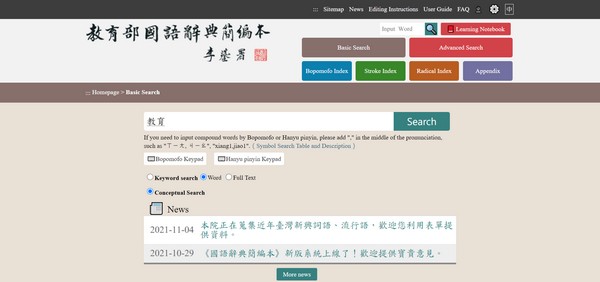
Step 2:
01. View the search result list.
02. It can be sorted by "Phonetic Sequence (ascending)", "Phonetic Sequence (descending)", "Word Count (ascending)" or "Word Count (descending)."
03. If you have logged in as a member, you can add the search results into "Learning Notebook".

Step 3: The relevant function description is the same as keyword search step 3.
(2) Advanced Search: Keyword is required, the remaining fields are optional.
Step 1: Enter Chinese keyword.
Step 2: Choose whether to add the following search criteria
01. Word Count: Enter numbers to find words that limit the number of words, such as 3 to 5 words.
02. Field: Multiple selections are possible, options include "First Word of the Keyword", "Middle Words of the Keyword", and "Last Word of the Keyword".
03. Variable Reading: Single choice, options include "Unlimited", "Yes" and "No".
04. Heteronym: Single choice, options include "Unlimited", "Yes" and "No".
05. Attached Picture: Single choice, options include "Unlimited", "Yes" and "No".
06. Retrieval Field: Multiple selections are possible, options include "Word Name", "Synonym", "Antonym" and "Interpretation".
07. Not Included: You can enter one or more keywords (separated by a half-width space) to filter out the words that contain keywords.
Step 3: Click "Search".
Example: Enter "天下" → Enter the number of words "3 to 5 words" → Check the field "Last Word of the Keyword " → Click "Search"
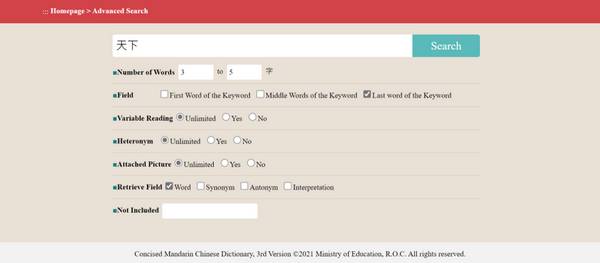
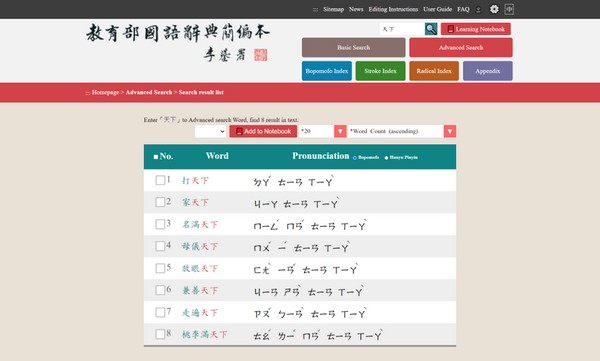
(3) Bopomofo Index:
Step 1: Select Bopomofo
Step 2: Select Bopomofo combination
Step 3: Select the word you want to search
Step 4: View the search result list and text content page.
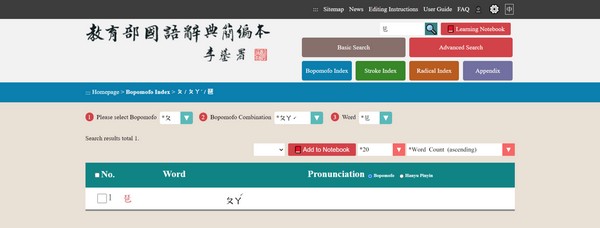
(4) Stroke Index:
Step 1: Select stroke count.
Step 2: Select radical, or select "ALL" to set the full selection.
Step 3: Select the word you want to search.
Step 4: View the search result list and text content page.
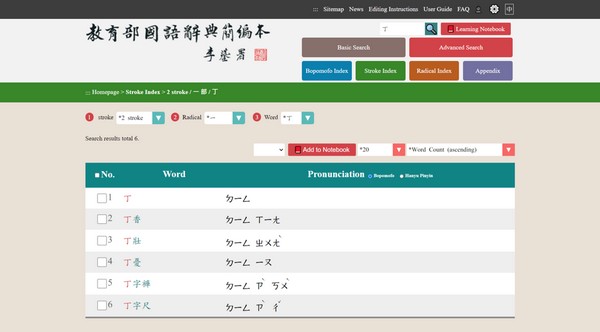
(5) Radical Index
Step 1: Select radical stroke.
Step 2: Select radical.
Step 3: Select the stroke other than the radical, or select "ALL" to set the full selection.
Step 4: Select the word you want to search.
Step 5: View the search result list and text content page.

(6) Appendix
Step 1: Select the items you want to view in the appendix.
Step 2: After entering the appendix item, from top to bottom: appendix description, index and additional functions, data content (different according to the characteristics of each appendix).
Step 3: Select the indexing feature to browse specific data.
Step 4: Choose to print the contents of the appendix to the current page.

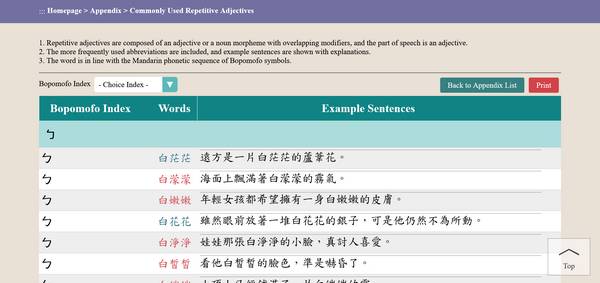
3. Other main functions
Other main functions, including "Learning Notebook", "Personal Settings" and "Opinion Exchange" are described as follows:
(1) Learning Notebook
- Member Registration
Step 1: Click the banner function bar "Member login" above.
Step 2: Click "Register ".
.jpg)
Step 3: Click "Agree".

Step 4: After completing the registration information, click "Register" and the system will automatically send a verification email.
.jpg)
Step 5: After receiving the verification email, click on the activation link and you will be directed to the member area.
- Change Password
Step 1: Enter "New Password" and "Confirm Password".
Step 2: Click "Modify".
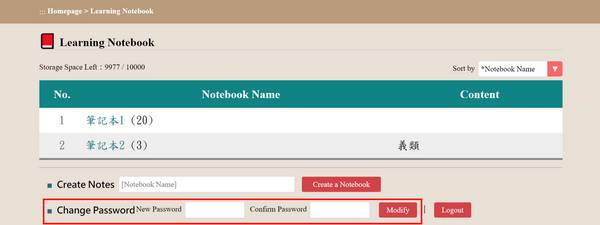
- Forget Password
Step 1: Click "Forgot Password".
.jpg)
Step 2: Enter the user's registered mailbox and click "Reset Password". The system will send the notification email automatically.

Step 3: After receiving the notification email, click the link to enter the member area to reset the password.
- Create Personal Learning Notebook
Step 1: Search word, such as "教育", and the result list will appear.
Step 2: Batch check the words you want to add to learning notebooks, drop down to select the notebook you want to add and click " Add to Notebook ", the system will pop up the confirmation window.
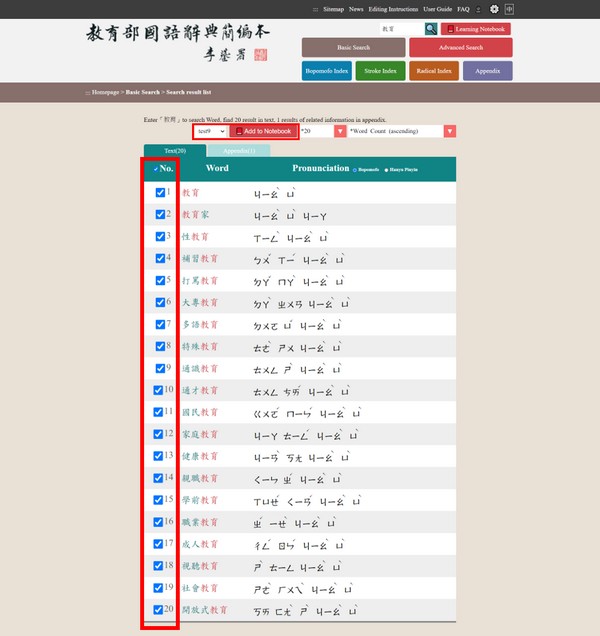
Step 3: Or click on the text content page, drop down to select the notebook you want to add and click "Add to Notebook" to add a single word.
.png)
- Add/Modify/Delete Learning Notebooks
Step 1: Add a new learning notebook
01. Click on "Learning Notebook".
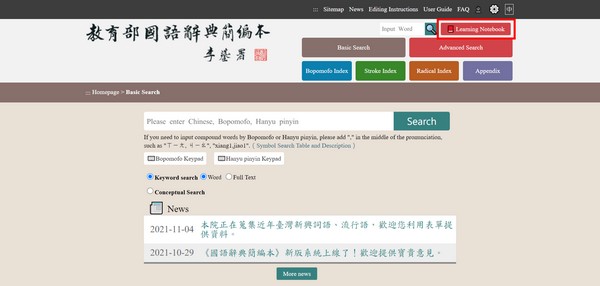
02. After entering the name of the notebook you want to add in the "Create Notes" input box, click "Create a Notebook".

Step 2: Modify the learning notebook
01. Click the notebook you want to modify, and modify "Notebook Name" and "Notes" at the bottom of the page. After entering, click "Update".
.jpg)
02. The Learning Notebook list page automatically presents updated information.
Step 3: Delete a notebook
01. Click the learning notebook you want to delete and click "Delete Notebook" at the bottom of the page.
.jpg)
02. If you want to delete a single word in the notebook, you can directly click "Delete" to the right of the word.
.jpg)
- Export Notebook
Step 1: Click on the export format, the options including:
01. Database (EXCEL)
02. eDictionary (PDF)
03. Web Version
04. Vocabulary Book (Please check "Print backgrounds".)
05. Sentence Book
Step 2: Drop-down to select the export type, the options including:
01. Concise Dictionary
02. Concised Mandarin Chinese Dictionary
03. Self-Edited Dictionary
Step 3: After setting the export options, click "Export Notes" to export the data in the selected format.
.jpg)
(2) Personal Settings: After members log in, users can personalize settings.
- Font Size
Click to set the font size of the text content page to big, medium and small. The system will automatically change font size and save the setting.
- Playing Audio
You can set the text content page audio file to "Manual Play" or "AutoPlay". The system will automatically take effect and save the new setting.
- Quick Query
You can set whether to turn on the quick query function of the text content page. If you click "Yes", you can search the dictionary content by selecting the text in fields such as "Synonym", "Antonym" and "Interpretation".
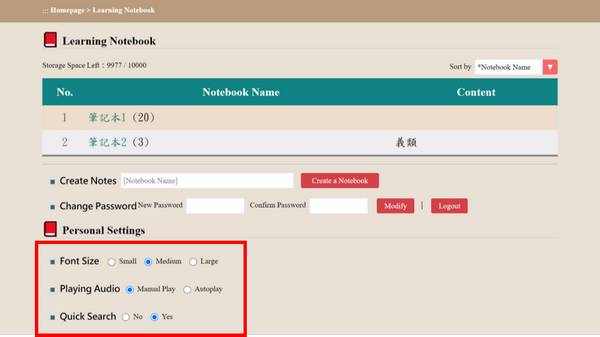
(3) Opinion Exchange: FAQ form.
Step 1: Click the "FAQ" in the upper function bar or the "Opinion Exchange" in the function bar below to enter the FAQ form.
Step 2: Click the tab at the top of the page to quickly jump to the top question of the question type.
Step 3: If there is no applicable answer in the FAQ form, you can click the page buoy "Feedback" to enter the feedback form filling page.
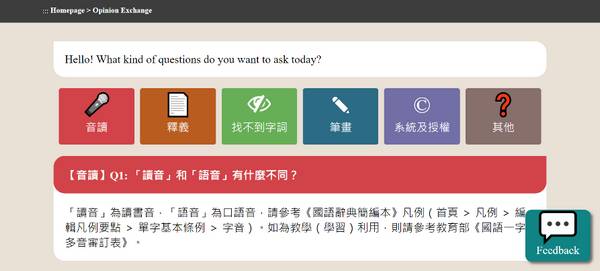
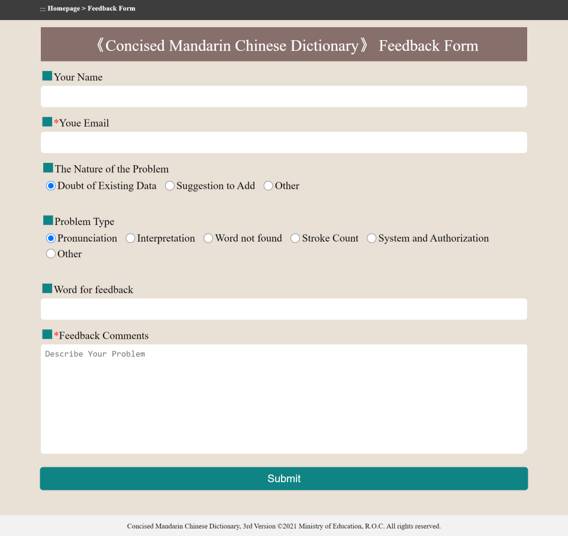
4. Browser Plug-in Function Description
(1) Recommended browsers: Chrome, Edge, Firefox
(2) Installation guide: When you use it for the first time, please click on the homepage of the dictionary (https://dict.concised.moe.edu.tw/), and then set it in the following instructions.
01. Chrome:
- Default Use: Please enter the homepage URL of the dictionary (https://dict.concised.moe.edu.tw) in the address bar, press the "Tab" key or click the "Search 簡編本" that pops up below the URL, then you can enter a word to search.
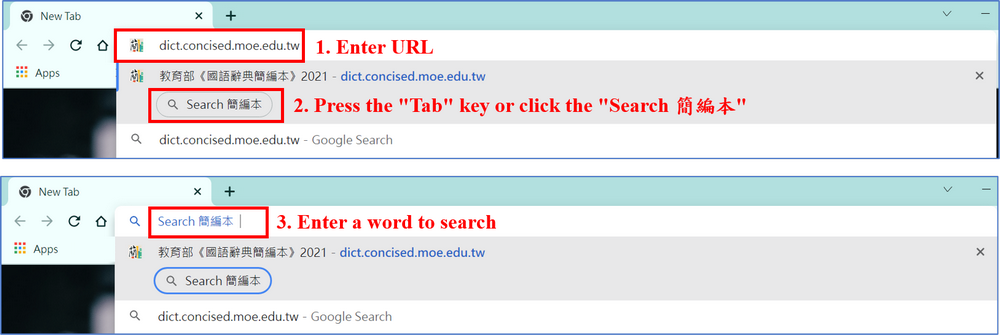
- Customized Use: Please enter the browser settings page to set up. You can enter your customized "keywords" in any address bar after completing the set up. Press the "Tab" key or click on the "Search 簡編本" that pops up below the URL, and then you can enter a word to search. Setting process: ︙ → Settings → Search engine → Manage search engines → click the right button of the 簡編本 search engine to enter "Edit" → modify "Keyword" → save.
.png)
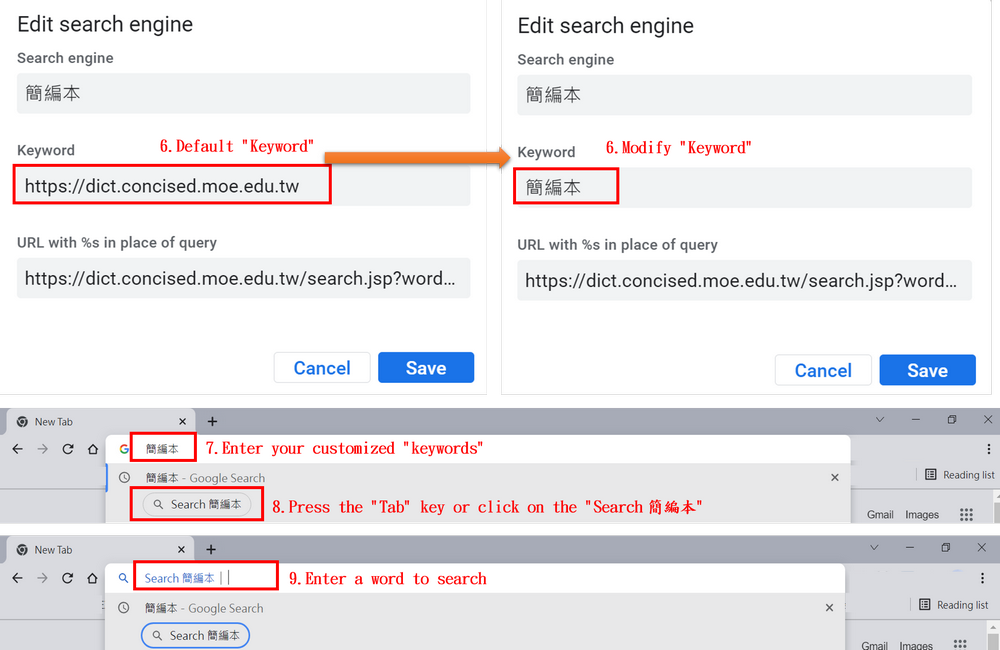
02. Edge:
- Default Use: Please enter the homepage URL of the dictionary (https://dict.concised.moe.edu.tw) in the address bar, press the "Tab" key or click the "Press Tab to search 簡編本" that pops up behind the URL, then you can enter a word to search.

- Customized Use: Please enter the browser settings page to set up. You can enter your customized "keywords" in any address bar after completing the set up. Press the "Tab" key or click the "Press Tab to search 簡編本" that pops up behind the URL, and then you can enter a word to search. Setting process: … → Settings → Privacy, search, and services → Address bar and search → Manage search engines → click the right button of the 簡編本 search engine to enter "Edit" → modify "Keyword" → save.
.png)

03. Firefox:
- Please enter the homepage URL of the dictionary (https://dict.concised.moe.edu.tw/) in the address bar and enter the webpage, click the search bar on the right to add a search engine for "簡編本搜尋". Afterwards, you can enter a word in the search bar and choose to use the "簡編本" search engine to search.

